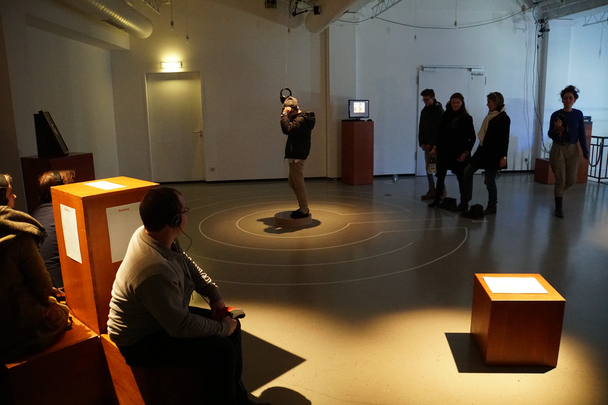
Visitors are exploring various interactive stations of the exhibition. Photo: Levin Sottru
“Frankenstein or the modern Prometheus” written in 1818 by Mary Shelley can be seen as a parable on how humans are creating technology and are then losing control over their own making. The body of Frankenstein’s monster is merely an empty shell before it receives the spark of life through a complicated electrochemical procedure. In the story its creation leads to a tragic end, implying that man must not try to create “animate” life as this is the realm of God (seen as deity of the Abrahamitic religions here). All attempts of man creating an autonomous “double” therefore have to fail, according to that reading, by the lack of a divine spark which is only possessed by God.
How does this view hold up in the face of modern science? Did we already pass the border established by our ancestors with genetic and biomedical engineering, AI or robotics? Or have we already extended our personal selves, for instance, by the help of technologies like the internet?
These questions were the starting point of the exhibition “Doppelgänger”, for which media artists Klemens Czurda and Iris Weigel from the HfG Karlsruhe recently visited labs of several BrainLinks-BrainTools PIs and then formed their impressions into a disturbing multisensory experience. From January 25 to 29, the pieces were shown at Künstlerhaus Mousonturm in Frankfurt. They accompanied a performance by digital arts duo Chris Kondek and Christiane Kühl. A booklet documenting the Freiburg lab tour will shortly be published online.